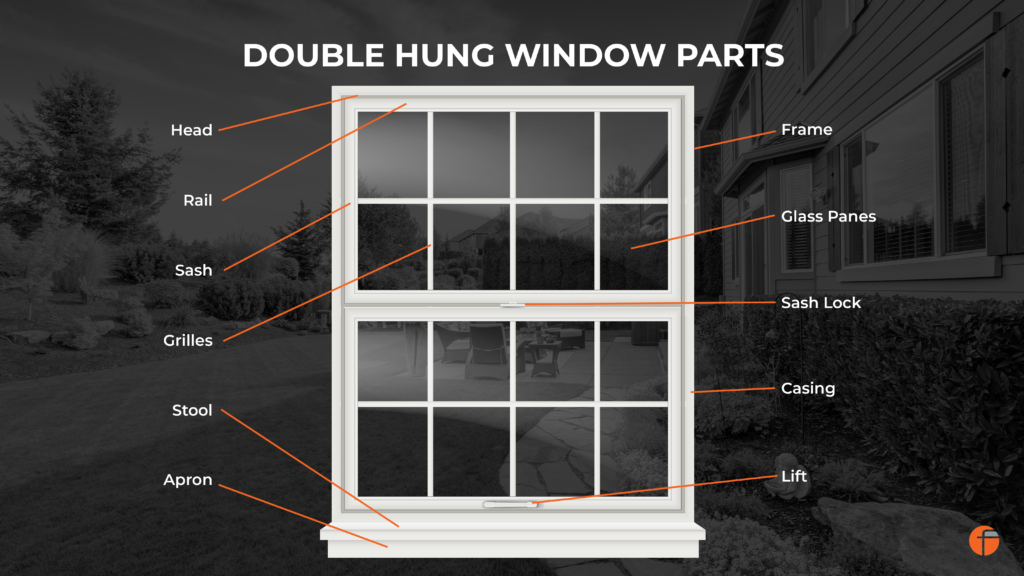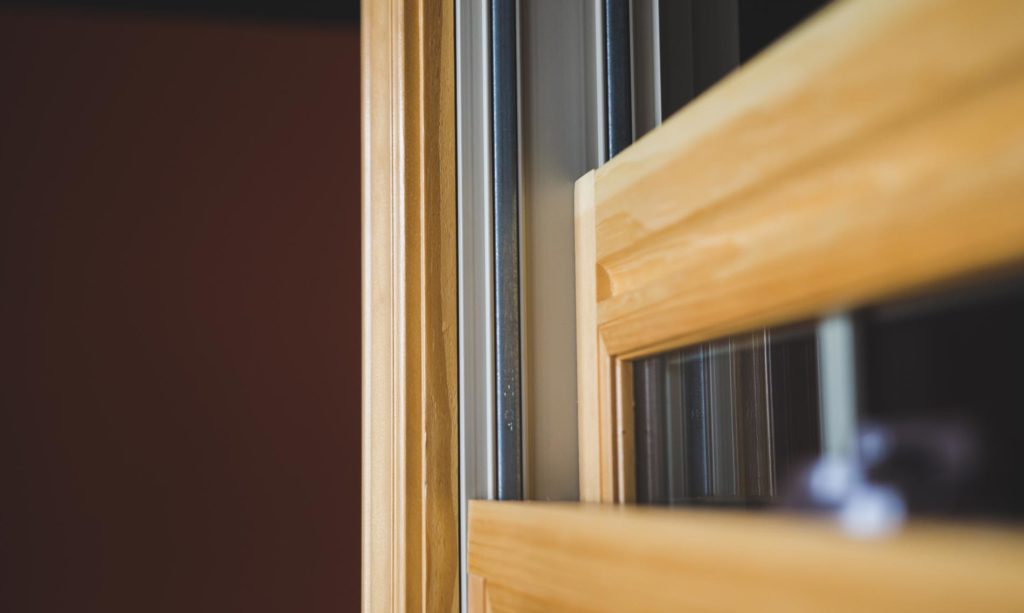Whether you are repairing your window or replacing it completely, window balances are vital mechanisms that will need attention during your project. Window balances can also be repaired and replaced as stand-alone projects to ensure your existing window works properly and efficiently.
However, window balances can be an often overlooked part of the window anatomy. In this guide, we discuss the ins and outs of window balances — what they are, the different types of balance options, how to know when you need to replace your balance and more.
What Is a Window Balance?
A window balance is a mechanism that allows single-hung and double-hung windows to open. When the sash (the operable part) of a single-hung or double-hung window is raised and lowered, it’s the window balance that allows it to do so by counteracting the pull of gravity that would otherwise make the window remain closed.
What Types of Windows Use Balances?

Both single-hung and double-hung windows use balances. A single-hung window has one operable sash that is closed when it’s in the lowest position. A double-hung window has two operable sashes with the bottom sash closed in the lowest position and the upper sash closed when it’s in the highest position.
A balance must allow the lower sash to be raised and the upper sash to be lowered while maintaining the desired position. The balance is also responsible for keeping the upper sash in its closed position.
Different Types of Window Balances

Prior to the invention of balances, sash windows had to be propped open with a stick or something similar. Modern windows contain more technology than they appear to. Hidden mechanisms that keep the sash moving smoothly are located behind the jambliner or in the frame itself.
Let’s take a look at the most common types of window balances:
Cord and Weight
Cord and weight balances were the first balances to be used in single and double-hung windows. These were relatively complex with a pulley system embedded in the window frame and lead or cast iron weights hidden behind the jambliner and attached to the frame with a cotton cord.
The cord and weight system used weights that were equal to the weight of the window sash to create a balance that could be maintained with the sash at any height. The pulley system allows the window to move up and down smoothly.
Pros:
- Cord and weight systems might adhere to the original window design and create an authentic experience.
Cons:
- The cords will eventually fray and break, leading to replacement costs.
- This system is outdated, making it more difficult to find replacement parts and companies that can do the repairs.
- In order to replace the balance system, the entire sash has to be removed, so the process is more complicated than with other systems.
Spiral
A spiral window balance is basically a tube that contains a spiral-shaped rod that is connected to a spring. The spring holds the tension and is equally weighted with the sash to maintain a counterbalance.
Pros:
- This is a very simple mechanism and can be customized to your window by adjusting the spring with a spiral balance tensioning tool.
Cons:
- The spring will continually get weaker with use.
- The spring must be coiled to the right tension in order for the spiral balance to hold the window in place.
Block & Tackle
A block and tackle window balance is a variation of the original cord and weight system with the addition of a spring to assist with opening and closing the sash. The tilt pins on the sash not only hold the sash in place in the jambliner, but they also fit into the balance terminal and allow the window to stay in place when raised or lowered.
Pros:
- Able to handle the weight of heavier sashes
- More durable than other balance systems
- Easily replaced
Cons:
- Your window may require a specific type of block and tackle system depending on when it was manufactured.
- A more complex system means there are more parts that can fail.
Constant Force
A constant force window balance system consists of a rolled coil spring that maintains tension on the sash and allows it to be raised and lowered. The coil rolls and unrolls, similar to a tape measure.
Pros:
- This system is highly durable, meaning a longer lifespan.
- The stainless steel coil won’t rust.
- It can be easily replaced.
Cons:
- It is less common than the block and tackle window balance, so it may be hard to find.
- It is most commonly found on vinyl windows rather than wood.
How Do I Know When My Window Balance Needs To Be Replaced?
Sash windows should glide smoothly up and down without the need for pulling or tugging, and they should stop where you want them to. If you’re having trouble raising or lowering your window, if it’s getting stuck or if you have to prop it up to keep it open, it’s probably time to replace the window balance.
Replacing Window Balances with Fenster Jambliners

The easiest way to repair your double-hung window balance is with a double-hung balance kit from Fenster. Our team at Fenster has put together a step-by-step guide on how to properly repair your balance:
- Raise the lower sash slightly.
- Tilt the sash by compressing the jambliner on each side and pulling the top of the sash towards you.
- Remove the sash by turning it to about 45 degrees and releasing the tilt pins from the frame.
- Repeat with the upper sash — this one may be a little more difficult because it has to pass the track of the lower sash.
- Release the internal flanges by inserting a putty knife, tilting it back and forth to release the flange from the frame.
- Slide the liner out of the frame.
- Place the new jambliner into the frame and tuck the flanges in on both sides.
- Place the sashes by tilting the sash and inserting the tilt pins into the balance terminals that are integrated into the jambliner beginning with the upper sash — if you’re replacing the sash as well, install the tilt pins into the sash before this step. Our Quiksash kit will already have the tilt pins installed.
Ready to get your window back on track? Contact our experts at Fenster today to discuss our jambliner replacement kits for your sash windows that make replacing the window balance easy and efficient!





0 Comments